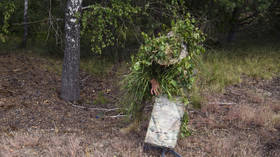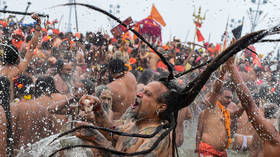Pleased to eat you: Belgian Neanderthals preferred cannibalism to waffles

Long before french fries, chocolate and beer became the staple diet of Belgians, they often dined on humans, according to new research. Ancient skeletal remains show neanderthals from what is now Belgium ate human meat and even bone marrow.
Remains dated from between 40,000 and 45,000 years ago discovered in the caves of Goyet show signs of intentional butchering, including skinning, fractures and breaks associated with cracking bones to extract that tasty human marrow.
The discovery published in Scientific Reports said it was “the first unambiguous evidence of Neanderthal cannibalism in Northern Europe”. It also found evidence that deceased Neanderthals still came in useful, with their bones used as tools for shaping stone implements.
Despite the grim details, cannibalism may not have been the preferred dining experience of all our ancestors, with the study showing that post-mortem practices differed greatly in the outlying area, despite a low genetic diversity.
Four sites excavated within a 250km radius of Goyet showed no evidence of cannibalism, leaving us to hope that at least some of our relatives had refined palettes.
READ MORE: 70 hot dogs, 10 minutes: 'Joey Chestnut is America'
Other, remains from the Goyet site revealed reindeer and horse were also on the menu for Belgian Neanderthals. Dinner parties could have served up an impressive menu of horse head soup for starter, reindeer stew for mains and human feet for dessert.
The diet of these people died with them as homosapiens moved into Belgium about 30,000 years ago - choosing chocolate over cannibalism and fine beers over blood. Some Neanderthals did interbreed, which could mean some of us still carry the taste for human flesh in our genes.













